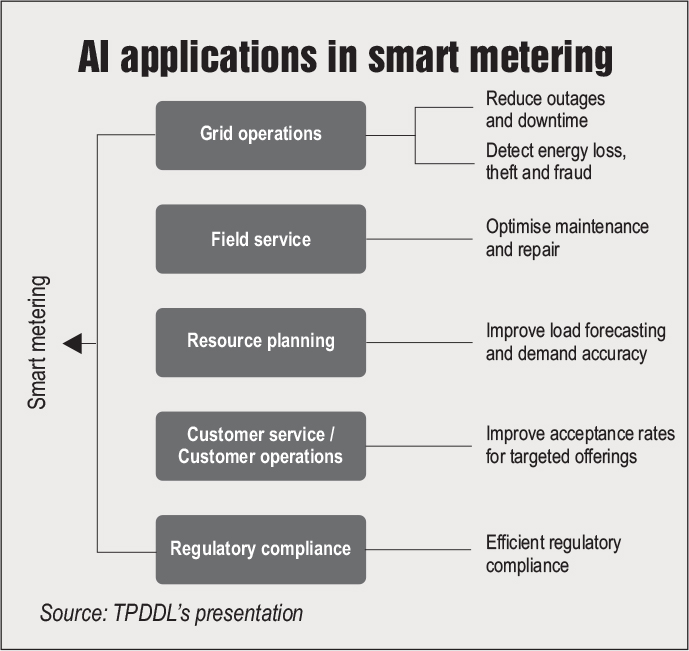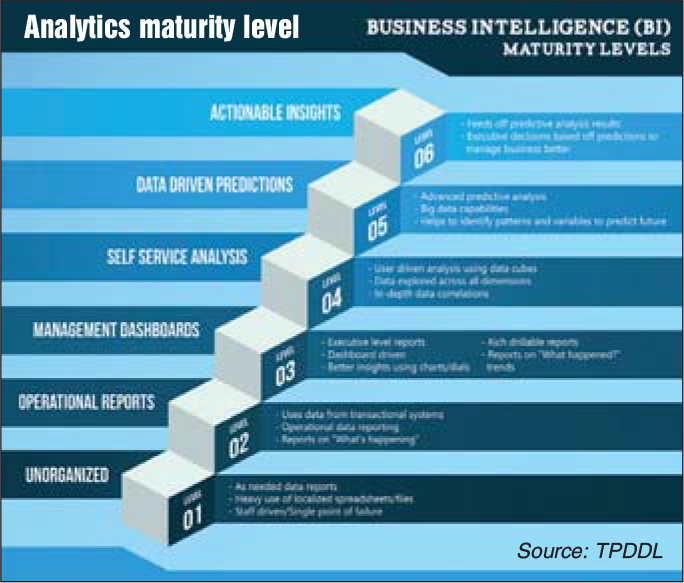Artificial intelligence (AI) and machine learning (ML) are ushering in the next wave of digital transformation. They are transforming businesses, that is, the way they run, compete and thrive. The key drivers of AI and ML are their problem-solving capabilities using next-generation solutions. They support the “go-to-market” strategies of new digital services/products by providing data science capabilities to utilities. The increased adoption of advanced analytics across the line of business and better integration of IT solutions in businesses can help achieve the best outcomes for both the company as well as consumers.
Areas of application for AI and ML
AI and ML help in predicting consumer footfalls at call centres and cash collection centres. They also help in making payment defaulter prediction for the next billing cycle. They enable customer segmentation for various schemes such as rooftop solar. These solutions help in complaint analysis as well as social media sentiment analysis on social media platforms such as Facebook and Twitter. They also enable consumer phone number mapping and data cleansing by predicting the correct contact numbers of consumers. On the commercial side, the key application areas of AI and ML include keeping a check on revenue losses by identifying customers involved in electricity theft. AI and ML improve operational performance by estimating the load growth through prediction of future electricity consumption on a group of feeders as well as the distribution transformer cumulative peak load. The dashboard for AI and ML provides information on various reliability indices such as aggregate technical and commercial losses, system average interruption duration index (SAIDI) and system average interruption frequency index (SAIFI) for any part of the network. It also helps in asset management by providing complete details about any network asset, such as maintenance, operations and failures. AI and ML help in predictive maintenance by using data science instead of periodic maintenance to optimise cost and operational efficiency, though it has received limited success owing to the lack of complete maintenance data in the system. Load balancing by identifying transformers with phase imbalance and identifying customers for battery bank installation are also areas of AI and ML application. Further, feeder tripping analysis is carried out by ranking feeders according to failure probabilities for maintenance prioritisation. AI and ML also help the HR department of a company in determining employee attrition. AI and ML solutions are deployed for smart metering. They help in grid operations by reducing outage and downtime and detecting energy loss, theft and fraud. They aid maintenance and repair, improve resource planning through load forecasting and demand forecast accuracy, and ensure regulatory compliance.
 Issues
Issues
The main issue related to AI and ML adoption has been data scarcity in terms of availability, volume, correctness and harmonisation. Data privacy and security is another issue as ML systems require a significant amount of data, which is often sensitive and personal in nature. Further, algorithm bias is an inherent problem with AI systems as they are only as good or as bad as the data they are based on. Bad data is often laced with racial, gender, communal or ethnic biases. Provability poses another issue as organisations that adopt AI cannot demonstrate clearly what it does. Organisations must adopt explainable AI as a best practice.
 Roadmap
Roadmap
An ideal AI/ML solution would tackle all these issues while ensuring the fastest RoI. All SAP/non-SAP relational database management systems as well as structured and non-structured connectivity need to be data source agnostic. These systems should be enterprise scale to be able to handle large data volumes. They should also have the capacity to process this data for fast consumption. Further, state-of-the-art interactive dashboards and visualisations should be incorporated, and analytics on the go should be made available on both iOS and Android. Companies need to have an implementation roadmap for AI and ML. They must get familiar with AI and identify the problems it can solve. They must acknowledge the internal capability gap and bring in experts to set up a pilot project and form a task force to integrate data. The companies must start small and learn from failures and build a balanced network. They must also examine the maturity level of their workforce and deploy AI and ML solutions gradually in order to reap the best results.
Based on a presentation by Narender Kumar, Head, Business Analytics, TPDDL at a recent Power Line conference
